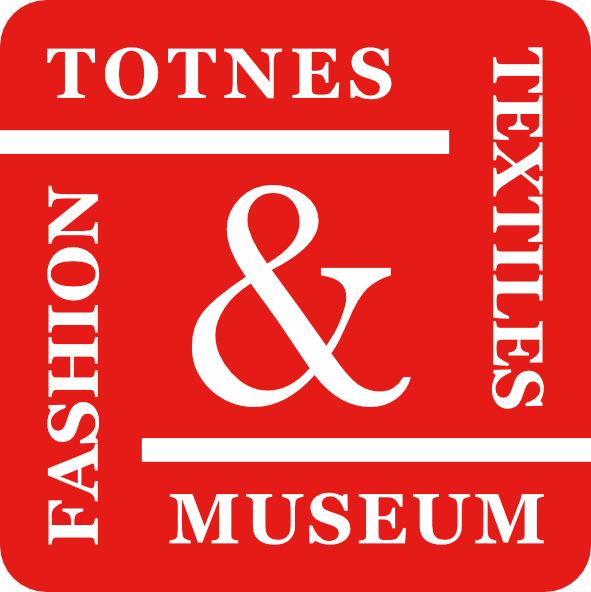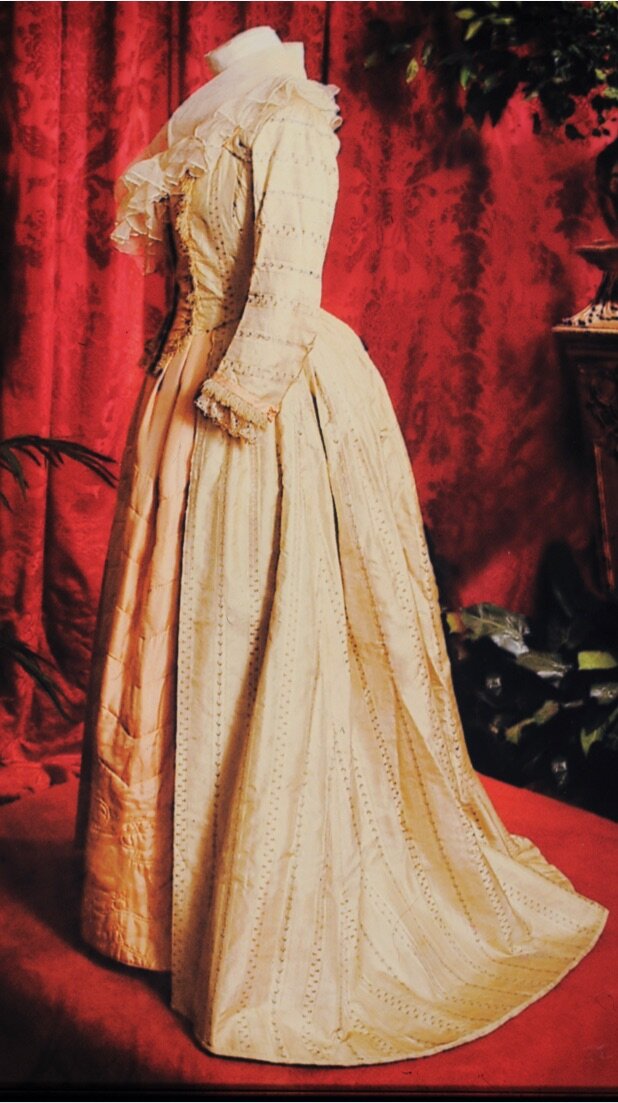18th Century Dress
A talk intended to be given to the Friends of the Collection in March 2021 by Julia Fox
Because of COVID-19 restrictions, this talk had to be cancelled, but honorary curator Julia Fox has kindly provided the following notes.
The 18th century can be considered as the beginning of modern attitudes (with the rise of the ‘middle classes’) to life, work, art, literature, architecture and dress.
During this century we see, not only the high point in the making of brocaded silk woven textiles but also their being overtaken by the taste for cotton. As well as textiles requiring specific conditions to survive long-term, the clothing of working people usually comprised worn-out and discarded items. This lead to there being a strong market for secondhand garments, particularly for practical day-wear. This is why it is usually elite dress which has survived and now forms the basis for museum collections.
There is one garment in the DCPC which can be considered ‘proletarian’ dress.
It is a long, red wool, hooded cloak (frequently described as a cardinal). It was worn by country women and also those visiting the countryside. By the early 19th century these garments were only recorded as being worn by ‘pedlar women’ — cut short with the distressed lower edge removed. They can often be seen in 18th century landscape paintings as small figures in the background.
For the well-off it was France, and particularly Paris, which was the leader of female fashion in dress (as in the other luxury trades). However, by the late 18th century, for fashionable men, it was London and the English tailors, with their long-developed skills with woollen cloth, that provided the high-point in male dress.
For most of the 18th century the most significant item of female dress was the Mantua, or open robe. This was a soft-bodied gown. The complete ensemble consisted of three items: an open-fronted, full-length gown, worn over a matching (or other) fabric petticoat and stomacher. Although these were usually purchased as a set, they were not always worn together. This helped to vary the outfit for different occasions. Beneath these outer garments were worn a linen shift and corset (known as stays) and hip pads (or panniers). For formal dress, stockings and heeled, buckled shoes were worn. To complete the ensemble a fine linen fishu or kerchief was often used to fill in the low, square neckline.
There were similar muslin elbow frills (perhaps with whitework embroidery) attached to the sleeves of the shift. On the head was worn a linen cap and, out of doors, a low-crowned straw or felt hat that became known as a bergère (farmer’s wife) or more formally a black silk hat with black ostrich feathers.
Examples from our Collection include these two cream silk gowns.
The outfit on the left (c.1775) is made from chine or warp-printed textile and has a matching petticoat. It is shown with a plain cream silk stomacher decorated with ruched strips of silk and self-coloured buttons down the centre. The skirt of the gown has internal strings with which to draw up or polonaise it.
The right-hand outfit (c.1770) is made from cream taffeta, embroidered with scattered bunches of embroidered flowers. Unusually, this embroidery was not made by a professional guild member but by the woman who then wore the garment, after it had been made-up by a female mantua-maker into a close-fronted, open-skirted gown. The muslin cap, displayed beside it, belongs with it.
There is a bergère on the floor in front of the two outfits.
This illustration shows a gown (c.1785). By this time, the pad and fullness in the skirt has been moved to the back of the garment and the sleeves are wrist-length. It is made of cream silk with woven stripes in pink and green. It is shown worn over a reproduction pink silk quilted petticoat.
At this time, men wore a version of the three-piece suit (first introduced in the 17th century by King Charles II). It consisted of a coat and knee-breeches, usually of the same textile and a waistcoat which could be in a matching or another fabric. With these items the man wore a linen shirt and stock, silk stockings (or of wool or linen for ordinary wear) and black leather buckled shoes. The hat in this ensemble was usually a tricorn or, for evening, a bicorn or chapeaux-bras, which could be folded flat and held under the arm.
The three main garments could be made from wool, silk, velvet or linen. For Court or formal wear they could be heavily embroidered. This decorative work was carried out in professional, male workshops (You can see a good example of this in the illustrations to The Tailor of Gloucester by Beatrix Potter).
The male outfit shown is Court Dress of the early 19th century. This is actually of the style dating from the second-half of the 18th century - which was now often the form of formal wear in the 19th century. The coat and breeches are made from wool - but the cream waistcoat is silk with multi-coloured embroidery.
For those who could afford it, lace was the most fashionable addition to the outfit. It was added to sleeve frills as well as stocks, fishus and caps. It was the most expensive type of decoration available.





